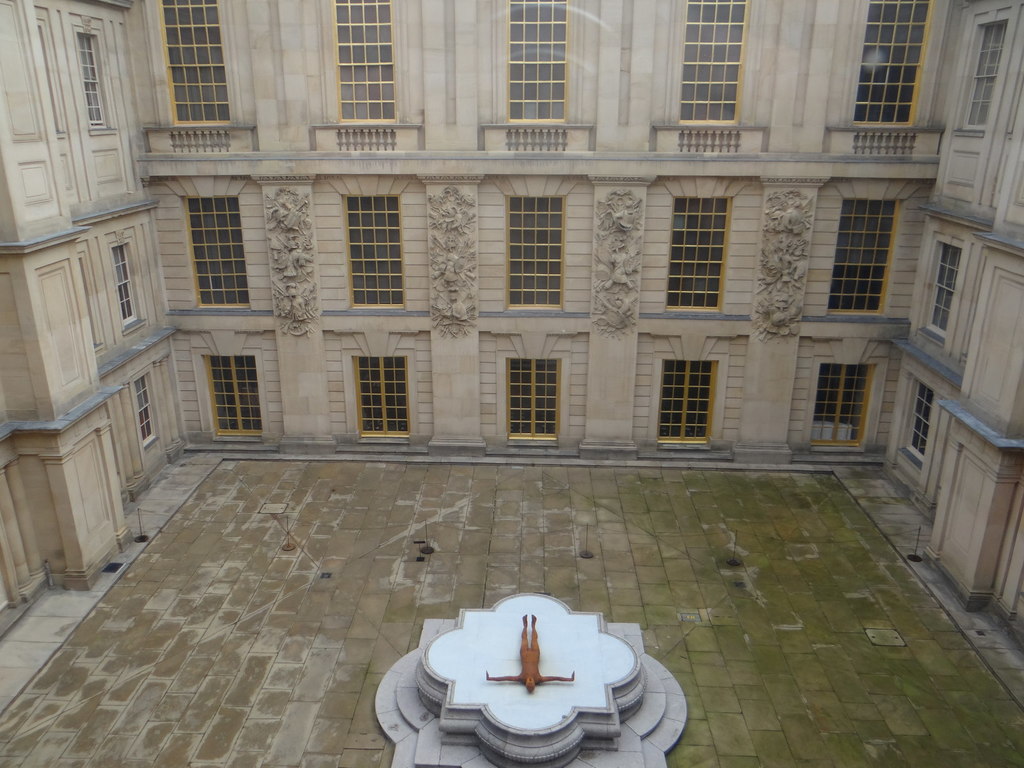Courtyard
The courtyard at Chatsworth House is used to display sculpture.
Contents |
[edit] Introduction
'Courtyard' is a term used to describe an area that is open to the sky but surrounded by a building (or buildings) or walls. The word court and yard originate from the same Latin term which roughly translates to enclosed space.
A quadrangle is a type of courtyard that is frequently associated with universities or other educational institutions (schools, libraries and so on).
[edit] History
Courtyards are found in both Eastern and Western cultures and have been used in architecture for many centuries.
In the Mesopotamian region of the Tigris–Euphrates river system, complex systems of urban planning were developed from the 10th millennium BC to the 6th century BC. These communities incorporated building styles that introduced some of the earliest examples of courtyard homes. Courtyard homes are structures that place the living quarters around the open, central courtyard.
In these structures, some of the rooms had doors that led directly into the light and private courtyard. This served as a place for eating, cooking, sleeping, gardening, keeping animals, socialising and other activities. In hotter climates, the currents created in a courtyard sometimes provided a cooler environment.
Some courtyard homes had added security, protected with fortifications such as gates or moats.
In medieval times, inns and public buildings had courtyards that sometimes served as meeting places. This usage eventually contributed to other meanings of the word, “court”, for example, describing activities associated with the resolution of legal disputes. For more information see: Court.
[edit] Courtyards in modern times
Modern courtyards are sometimes found in urban housing communities with multiple separate residences. They provide open - but protected - spaces that can be used by families who seek safe locations for their children to play.
Some historic courtyards have been enclosed by modern roofs, such as the quadrangle at the British Museum.
[edit] Related articles on Designing Buildings
Featured articles and news
RTPI leader to become new CIOB Chief Executive Officer
Dr Victoria Hills MRTPI, FICE to take over after Caroline Gumble’s departure.
Social and affordable housing, a long term plan for delivery
The “Delivering a Decade of Renewal for Social and Affordable Housing” strategy sets out future path.
A change to adoptive architecture
Effects of global weather warming on architectural detailing, material choice and human interaction.
The proposed publicly owned and backed subsidiary of Homes England, to facilitate new homes.
How big is the problem and what can we do to mitigate the effects?
Overheating guidance and tools for building designers
A number of cool guides to help with the heat.
The UK's Modern Industrial Strategy: A 10 year plan
Previous consultation criticism, current key elements and general support with some persisting reservations.
Building Safety Regulator reforms
New roles, new staff and a new fast track service pave the way for a single construction regulator.
Architectural Technologist CPDs and Communications
CIAT CPD… and how you can do it!
Cooling centres and cool spaces
Managing extreme heat in cities by directing the public to places for heat stress relief and water sources.
Winter gardens: A brief history and warm variations
Extending the season with glass in different forms and terms.
Restoring Great Yarmouth's Winter Gardens
Transforming one of the least sustainable constructions imaginable.
Construction Skills Mission Board launch sector drive
Newly formed government and industry collaboration set strategy for recruiting an additional 100,000 construction workers a year.
New Architects Code comes into effect in September 2025
ARB Architects Code of Conduct and Practice available with ongoing consultation regarding guidance.
Welsh Skills Body (Medr) launches ambitious plan
The new skills body brings together funding and regulation of tertiary education and research for the devolved nation.
Paul Gandy FCIOB announced as next CIOB President
Former Tilbury Douglas CEO takes helm.
UK Infrastructure: A 10 Year Strategy. In brief with reactions
With the National Infrastructure and Service Transformation Authority (NISTA).























